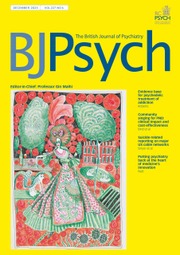Epidemiological data consistently show higher rates of suicide in men, yet women attempt suicide more frequently and are more likely to engage with mental health services. Within this statistical landscape, the completed suicides of prominent women artists stand out as rare, unsettling ruptures. These cases – Sylvia Plath, Francesca Woodman, Ana Mendieta, Virginia Woolf, Sarah Kane, Chiara Fumai – demand a nuanced, contextual reading that incorporates psychiatric, sociocultural and existential dimensions.
Each of these women experienced symptoms that may align with affective or psychotic spectrum disorders, particularly depression and bipolar disorder, yet their deaths cannot be understood solely through a clinical lens. Their suicides often followed periods of intense creativity and public engagement, suggesting that the act may be as much a cultural and symbolic protest as it is a symptom of mental illness.
Plath’s Ariel and Kane’s 4.48 Psychosis illustrate how suicidal ideation can be transmuted into language, performance and structure. Woodman’s photographic self-erasures and Mendieta’s corporeal, landscape-bound interventions suggest a struggle with identity, erasure and embodiment. In each case, artistic creation served as both coping mechanism and site of confrontation with suffering.
Psychiatry must also reckon with the gendered context of these deaths. Female artists often face structural silencing, misrecognition or appropriation – as seen in the posthumous framing of Plath through the legacy of her husband Ted Hughes, or the legal ambiguity surrounding Mendieta’s fatal fall following an argument with fellow artist Carl Andre. Such contexts may amplify feelings of disempowerment and despair, particularly for those already living with mental illness.
These suicides compel us to ask: what are the sociocultural conditions that render life unliveable for some women, despite their access to expression, education and professional acclaim? Moreover, how can psychiatry better understand the symbolic dimensions of self-destruction – particularly when it comes from those whose suffering has already been articulated and, too often, dismissed?
While caution is needed to avoid romanticising suicide, the deaths of these women highlight the intersection of gender, creativity and psychopathology. They are not simply tragic end-points but also mirrors held up to our clinical, cultural and ethical responsibilities. To bear witness to these lives – and their endings – is not only an act of remembrance, but also a call to rehumanise care.



eLetters
No eLetters have been published for this article.